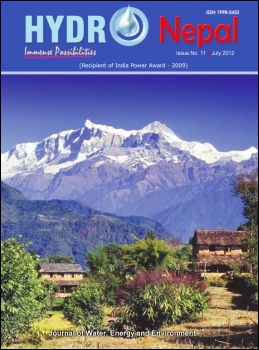Application of Hydrosuction Sediment Removal System (HSRS) on Peaking Ponds
DOI:
https://doi.org/10.3126/hn.v11i0.7162Keywords:
Hydrosuction Sediment Removal System (HSRS), ponds, settling basin, reservoir, NepalAbstract
The value of the peaking hour energy is very high in Nepal where people are facing more than 16 hours load shedding in a day during the dry period. Currently, the peak load demand is about 90% higher than the off peak load demand. Therefore, a storage type hydropower project plays a signifi cant role in the Nepalese energy sector and decides the fate of load shedding. However, the Reservoir sedimentation studies in Nepal show that the capacity of the reservoirs has been reduced significantly; hence, preservation of these reservoirs is a vital issue.
The hydrosuction sediment removal system (HSRS) is one of the methods to remove sediment from the reservoirs. A modified double layer suction head of HSRS was used in a field test of HSRS at the Settling Basin of Sunkoshi Small Hydropower Plant (SSHP) and Peaking Pond of the Sunkoshi Hydropower Plant (SHP). This paper presents field test results in the settling basin of SSHP and peaking pond of SHP and applicability of HSRS in the Kulekhani Reservoir and other peaking ponds in Nepal.
DOI: http://dx.doi.org/10.3126/hn.v11i0.7162
Hydro Nepal Vol.11 2011 pp.43-48
Downloads
Downloads
Published
How to Cite
Issue
Section
License
The copyright of the articles and papers published is held by HYDRO Nepal Journal.
The views and interpretation in this journal are those of author(s), and HYDRO Nepal does not bear any responsibility for the views expressed by authors in the journal.




